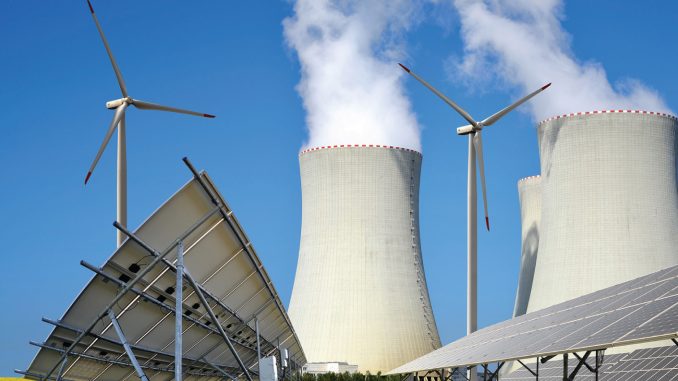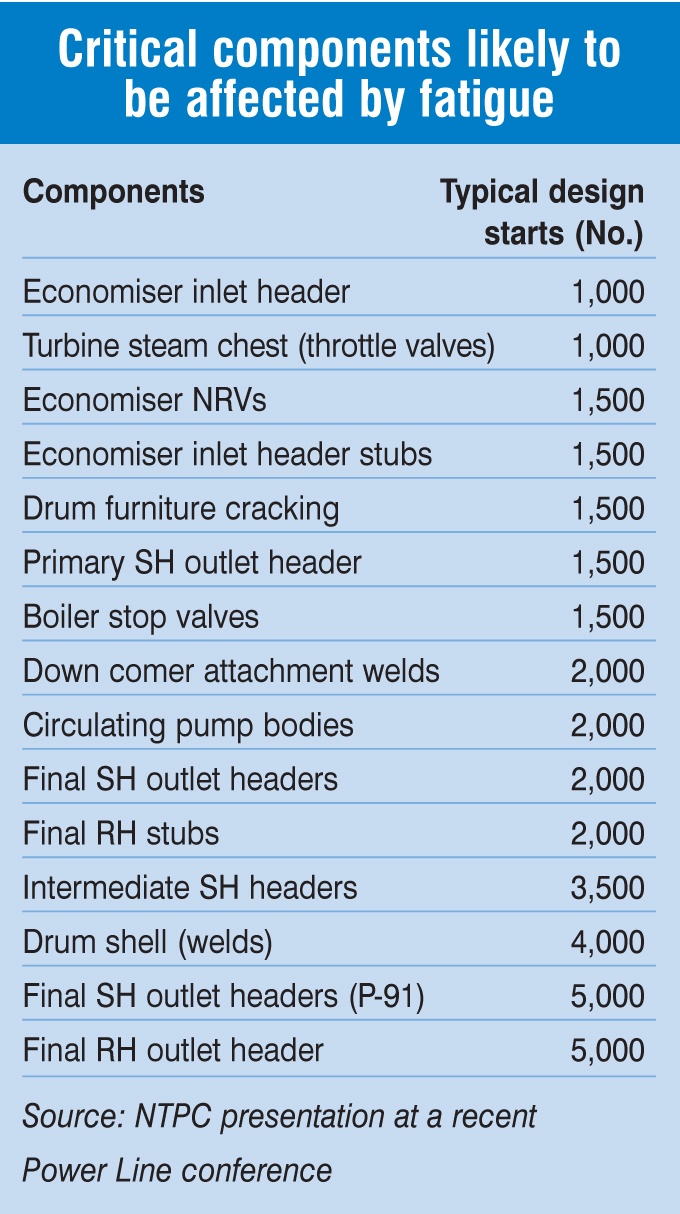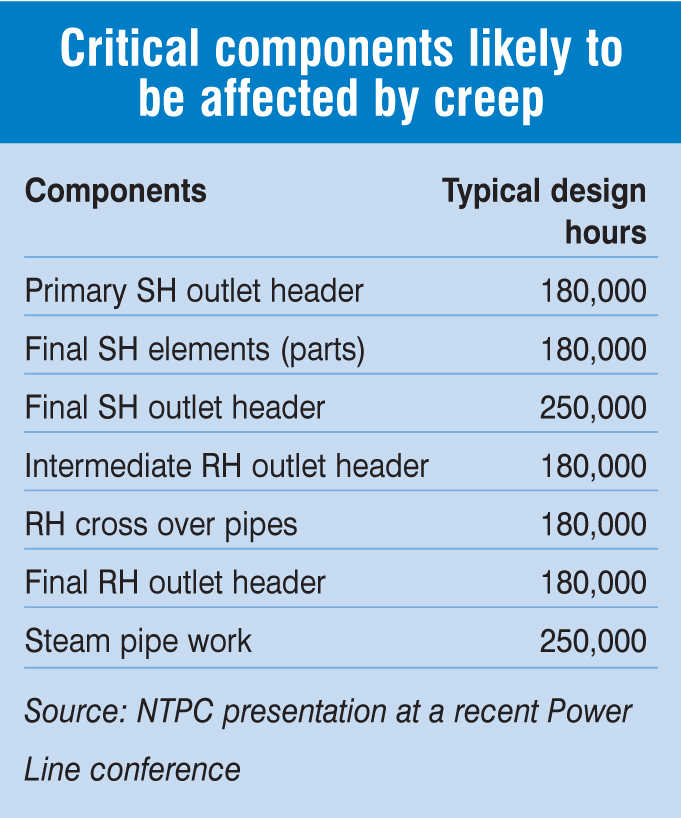
India’s Intended Nationally Determined Contributions (INDCs) aim to base 40 per cent of the total installed power generation capacity on non-fossil fuel resources by 2030, with international support on technology transfer and financing. This includes the government’s ambitious target of achieving 175 GW of renewable energy by the year 2022 (100 GW from solar, 60 GW from wind, 5 GW from small hydro and 10 GW from biomass) from the current installed base of 80 GW.
As India works towards rapidly increasing its renewable capacities in order to meet its INDC targets, a key concern is related to managing the intermittency from renewable energy sources. The lack of a good storage system prevents renewables from providing 24×7 power. This has created the need for flexibilising other conventional energy sources.
While gas and hydropower plants are known for their flexible power generation capabilities, there is limited availability of cheap gas or storage-based hydro. With abundant coal reserves, flexibilisation of coal-based power plants can help ensure reliable power for safe and stable operation of the grid, until proper storage solutions are developed.
The preparation and management of flexible operation of coal-based plants will be a critical factor for the survival of such plants in the changed business environment and will need a realignment of strategies. Critical risks of process safety, increased costs, a higher probability of equipment failure and a reduction in the unit life associated with cycling will need effective management.
Impact of rising renewables
The flexibility of a power plant can be described as its ability to adjust the net power fed into the grid, its overall bandwidth of operation and the time required to attain stable operation when starting up from a standstill condition. When there is shortage of power, thermal power plants (TPPs) are required for a quick start-up, whereas when there is surplus power, the demand is for as low as possible minimum stable generation. In fact, to bring TPPs at the minimum load is one of the biggest challenges. The provision for a technical minimum, which was kept at 70 per cent earlier, came down to 60 per cent and now stands at 55 per cent.
The Central Electricity Authority of India’s National Electricity Plan (December 2016) analysed the hourly data of three years and estimated the all-India load profile and the net load curve for the year 2021-22, based on the respective projected peak demand and energy requirement. It is observed that high ramping up and down requirements are there, especially in peak and off-peak times. The duck belly demand to peak demand ratio is 61 per cent, which will lead to partial loading and shifting, that is, cycling of conventional power plants and hence, low plant load factors (PLFs).
Other impacts on the existing plants are expected to be increased forced outages and operations and maintenance (O&M) cost, equipment lifetime reduction, poor heat rate and high auxiliary power. According to estimates, an average of 40 per cent annual reduction in fatigue life is expected with daily cycling operations and an average of 25 per cent annual reduction in creep life.
Apart from generators, variable renewable power impacts the transmission system and could lead to difficulties in load frequency control and scheduling of tertiary reserves. There would also be a requirement of enhanced transmission network and ancillary services, which may lead to increased system operation cost and transmission costs.
 Challenges to flexibilisation
Challenges to flexibilisation
Varying coal quality poses a major challenge to flexibilisation of coal-based power plants. Plant design is another challenge faced by TPPs because all plants have been designed for baseload operations, hence the time taken for start-up is considerably higher. Further, most of the state utilities are yet to reduce minimum load levels. Moreover, most of the coal-based power plants have long-term contract arrangements and such power purchase agreements have limited flexibility. Therefore, there is a need to incentivise of flexibilisation through regulations or market signals. Another challenge is geographical concentration of renewable power and its transmission constraints. Significant transmission lines would be required for renewable energy evacuation. However, these lines will only operate around 8-10 hours. Low capacity utilisation will result in higher costs. Another major challenge is the training and development of plant personnel. The existing plant workforce is trained to operate plants at high PLF, in high efficiency mode. Moving towards the flexibilisation of power plants would require adequate manpower training to enable a smooth transition.
Cost of flexibilisation
At the generator level, flexibilisation leads to higher opex and high capex costs. Increase in forced outages, start-up costs, loss of useful life of components due to fatigue and creep, reduction in efficiency, environmental costs, and cost of increased consumption of water and chemicals are the factors during opex costs. Also, retrofits/modification for increased flexibilisation would lead to higher capex costs.
There are higher system costs associated with flexibilisation and variable renewable sources are located far off from load centres. There could be balancing costs as well since day-ahead forecast errors can cause unplanned intra-day adjustments of dispatchable power plants and require operating reserves to respond within minutes to seconds.
 Strategies to mitigate flexible operational damages
Strategies to mitigate flexible operational damages
Several measures can be implemented to prepare a flexible coal-fired unit. At the O&M level, these include stringent water chemistry control and pressure part management as a number of failures take place in pressure parts. Also, temperature monitoring of turbine parts and changes in boiler operating procedures need to be carried out.
Some modifications that can be introduced in boilers are steam flow redistribution and metallurgy improvement in superheater (SH) and reheater (RH), improvements in selected critical and degraded expansion joints, use of improved material for air preheater basket, making it capable of operating in the wet flue gas regions, automatic pressure control on roll and race to adjust the grinding pressure of the mill, deployment of smart soot blowing systems, advanced tilt mechanisms, improved automated boiler drains, and introduction of ball and tube mills.
Some design modifications for turbines include introducing turbine heating and electric blankets, modifying sliding pressure modes, and using shrink rings on high pressure inner casing in place of joint flange bolt design of high pressure turbines. Converting from throttle governing to nozzle governing and introducing a welded rotor design for faster ramp rate and improved start-up time are other modifications that can be implemented.
With two-shift operating practices, there is also a need for regular check-up of oil guns for light-up without delay. There is also a need to reduce start-up time with advance preparation. Further, to avoid wide thermal transients, any operation that can potentially lead to thermal shock or fatigue like sending cold water in hot economiser should be avoided. Further, standby equipment should be maintained in a warm-up condition.
Conclusion
Large-scale renewable energy has been successfully integrated into grids the world over. International cooperation is necessary, particularly from the renewable energy-rich countries, especially Germany, as they have managed to achieve the low load operation of thermal units. Policy and regulation have to play a major role in the integration of renewable energy to promote green energy and to ensure grid stability and reduction of overall system operation cost (grid as well as generating units) in the long run by reducing the extent of cycling at coal-based generating stations. Wider participation of fossil plants will be necessary for managing the flexibility requirement. Also, participation of original equipment manufacturers is necessary. Training and capacity building of operators is also important to minimise the impact of cycling and operations at minimum load levels.
